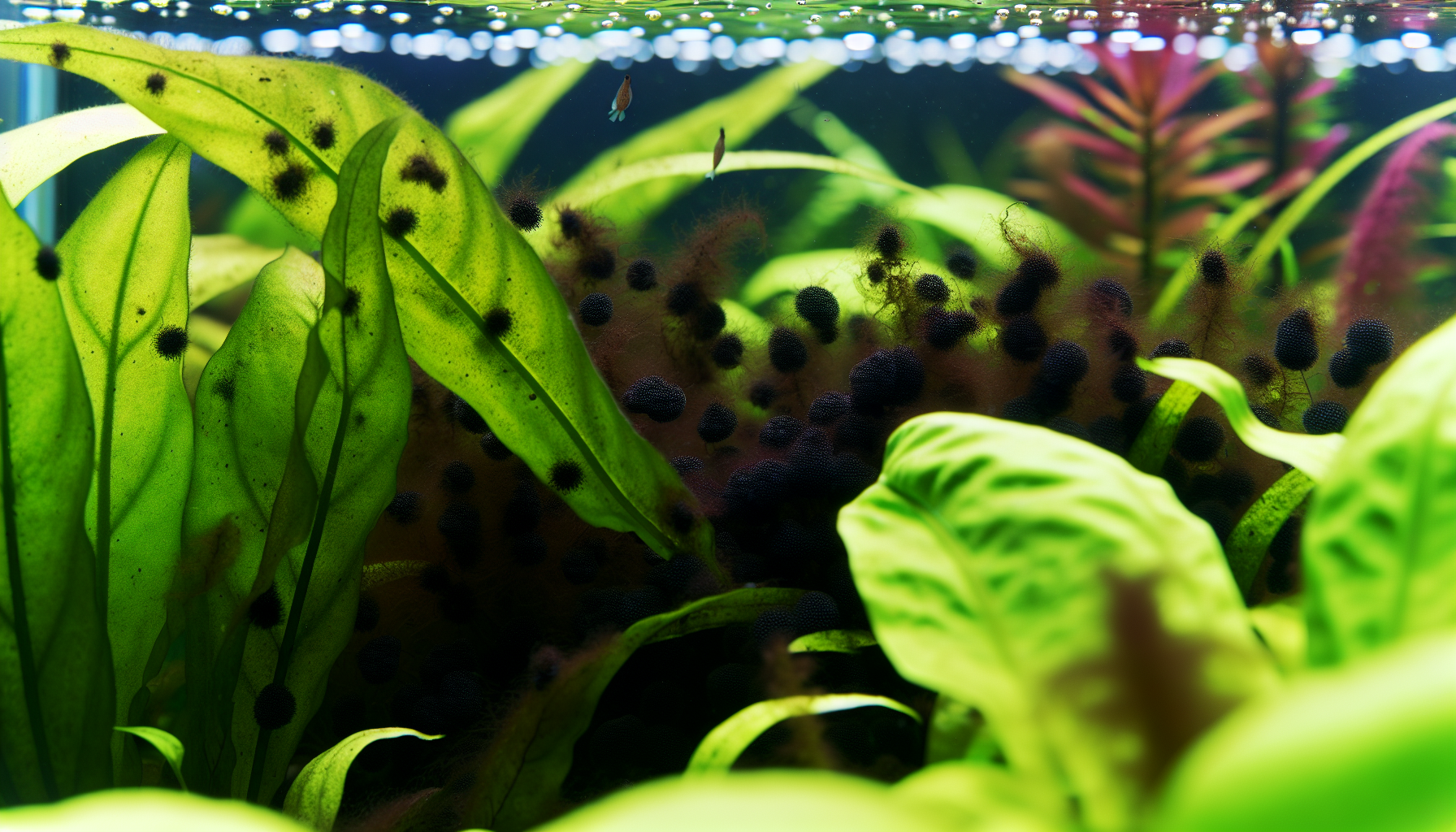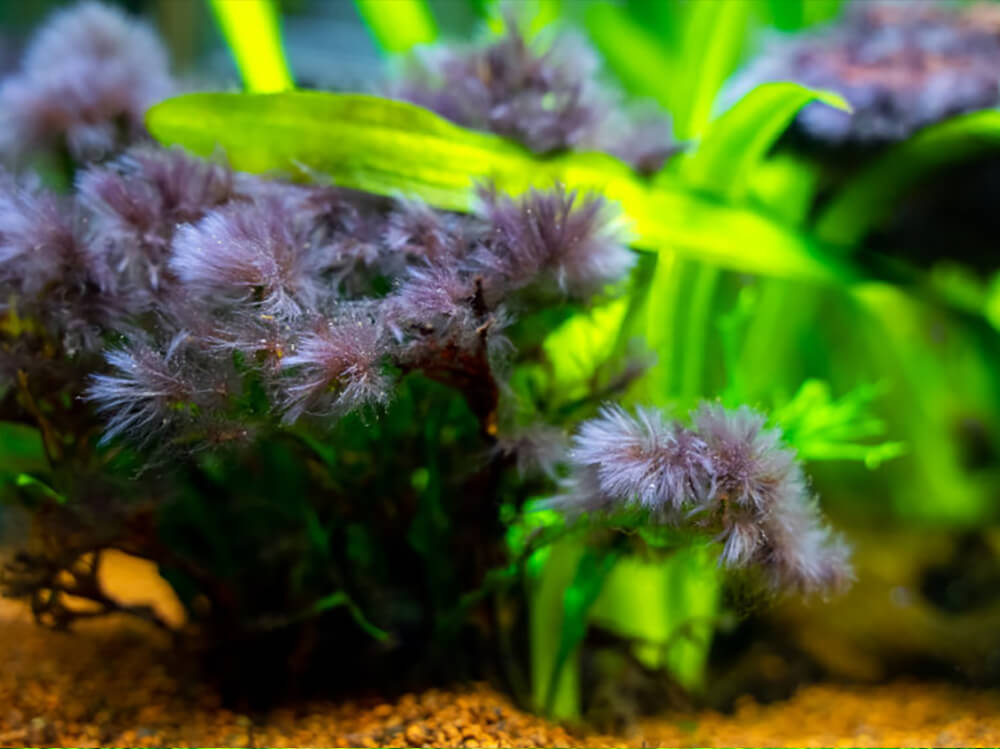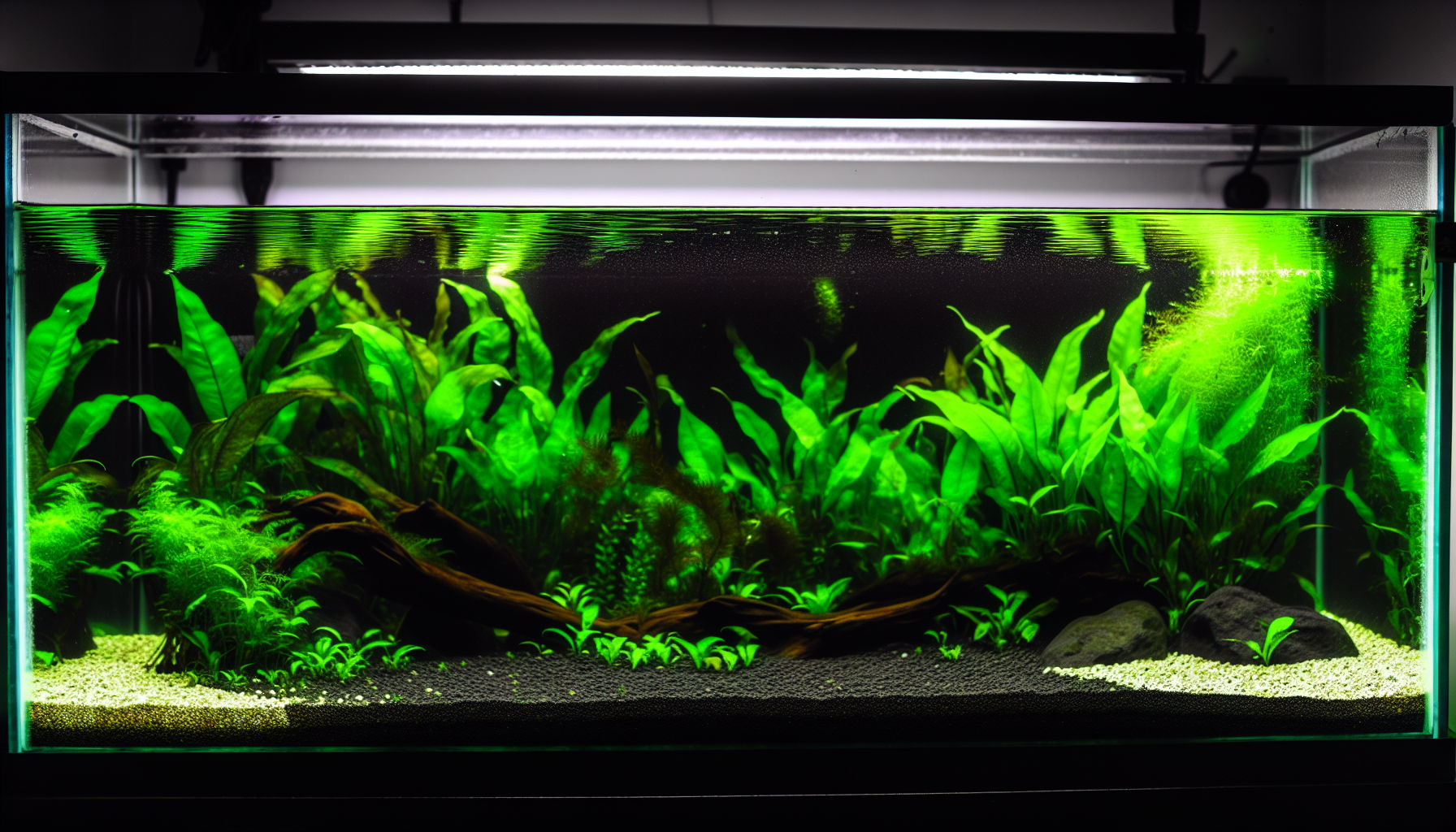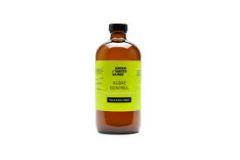Black Beard Algae Winning the Battle: Effective Strategies for Aquarium Owners
Are you facing a tough time with black beard algae in your tank? This guide cuts through the confusion to offer you clear solutions. Learn to identify and understand the conditions that promote black beard algae growth, and arm yourself with effective methods to eradicate it for good. We’ll provide essential insights on prevention, treatment, and maintenance to help you maintain a thriving aquarium.
Table of Contents
Key Takeaways
- Black Beard Algae (BBA) loves rough surfaces and also weak water flow, and fluctuating CO2 levels—it’s a stubborn party crasher in tanks that aren’t maintained well.
- BBA can get the boot by using hydrogen peroxide solutions, liquid carbon treatments, or bleach dipping—just be sure to follow with thorough rinses and maintain tank oxygenation.
- Stocking your aquarium with BBA munchers like Siamese Algae Eaters and Amano Shrimp can naturalize your BBA management, complementing the chemical and manual removal methods.
Understanding Black Beard Algae: The Enemy in Your Aquarium

Also known as Audouinella, Bryopsis, or black brush algae, black beard algae bba is a particularly stubborn algae that thrives in many aquarium conditions. It’s characterized by:
- Dense clusters of dark green or black tufts that resemble a ragged beard
- Moving like short grass in the current of your tank
- Its coarser texture makes it a bit more resilient than other algae types, further complicating your fight against it.
Typically, BBA takes hold on rough surfaces within your aquarium, such as the edges of leaves, wood hardscape, or even silicone seals. If you think stagnant water might be safe, think again. It’s actually a favored environment for BBA to flourish. So, recognizing these growth patterns is the first step to reclaim your aquarium from this unwelcome invader.

Appearance and Growth Patterns
Identifying BBA is vital in your fight against it. The characteristics of BBA include:
- Dark green or black coloration
- Distinctive ‘beard-like’ tufts
- Clusters that attach to rough surfaces within your aquarium, such as plant leaves or silicon seals
These characteristics make BBA quite conspicuous and easy to identify.
However, it’s not just the appearance that sets BBA apart. The growth patterns are unique as well. Unlike some algae that prefer smooth surfaces, BBA is drawn to rough ones. This means you’re likely to find it on the edges of leaves, wood hardscape, or silicon seals. Recognizing these growth patterns can help you spot an infestation early and take swift action.
Ideal Conditions for BBA Growth
Black beard algae can thrive in challenging conditions, much like an uninvited party guest. It loves environments rich in nutrients and where CO2 levels are low or fluctuating. Often, these conditions result from poor water quality and maintenance practices, which is why regular aquarium care is so crucial to prevent black beard algae. But is black beard algae harmful? Let’s find out what is black beard algae’s impact on aquatic life and discuss removing black beard algae effectively, as well as how to treat black beard algae.
Elevated levels of nitrates, phosphates, and micronutrients such as potassium and magnesium exceed certain target values, creating a perfect environment for BBA to proliferate. Areas of low water flow are preferred by BBA, as they often have a buildup of excess nutrients that the algae utilize for growth. Poor lighting also contributes to BBA growth, as the algae can establish itself in lower light conditions within the aquarium.
Now that we know what conditions BBA loves, let’s explore how to make your aquarium a less hospitable place for it.
Effective Methods to Eliminate Black Beard Algae
While BBA is stubborn, it is not insurmountable. By implementing a few effective treatment strategies, you can eliminate this nuisance from your aquarium. Simple actions like trimming affected leaves or decorations can offer immediate relief by physically removing the algae. However, for a more sustainable solution, we need to employ some tried-and-tested methods.
There’s more than one way to treat BBA. You could:
- Conduct a blackout by turning off all lights and blocking natural light sources for several days
- Apply heat treatments to the aquarium water that are lethal to the algae but suitable for your tank inhabitants
- Ensure adequate water flow to help distribute treatment solutions evenly, contributing to a more effective treatment of BBA.
Once the treatment is completed, follow these steps to clean the affected areas:
- Gently remove the dead algae using a soft-bristled brush.
- Be careful not to disturb the surrounding ecosystem while cleaning.
- This will keep the tank clean and reduce the likelihood of future outbreaks.
Green Water Labs Algae Control
Algae Control offers an effective plant-based solution for combating various types of aquatic algae and cyanobacteria. This water-soluble liquid can be conveniently applied through foliar spraying or direct addition to water bodies. Its active ingredients target and hinder the growth of different algae and cyanobacteria forms within the water column. By focusing on enzymes, it effectively tackles filamentous, suspended, and attached species, thereby curbing algae proliferation without harming fish, shrimp, or other aquatic plants when used as directed.
The product effectively addresses algae types such as Chlamydomonas, Oscillatoria, Pandorina, Scenedesmus, Spirogyra, Ulothrix, Xanthophyceae, as well as cyanobacteria like Anabaena, Gloeotrichia, Nostoc, Oscillatoria, and Scytonema. Additionally, it targets Black Beard Algae.
For optimal results, administer weekly by directly adding the solution to the filter. It's crucial to avoid overdoing it to prevent undue stress on your aquatic inhabitants. To ensure a smooth introduction, a recommended dosage of 1/2oz twice a week is advised, especially if fish or shrimp stress is a concern.
If initial results are unsatisfactory after a few weeks, consider increasing the dosage to 1oz per every 5 gallons, allowing sufficient time for your aquatic life to adjust and acclimate to the treatment. Green Water Labs
Hydrogen Peroxide Treatments
Hydrogen peroxide is a proven method for treating BBA. By creating a solution of one part 3-5% hydrogen peroxide to three parts aquarium water, you can effectively combat BBA. The hydrogen peroxide works by breaking down the cell walls of the BBA, leading to its death.
The application is quite simple. You can directly apply the hydrogen peroxide solution to algae-infested areas using a syringe or a turkey baster. Alternatively, if the infested items are removable, you can use a spray bottle and rinse the items with dechlorinated water before returning them to the aquarium. Don’t forget to sustain water oxygenation with an air pump throughout the treatment.
Liquid Carbon Solutions
Liquid carbon solutions, such as Seachem Flourish Excel, offer another effective way to inhibit and ultimately eradicate BBA. These products can be applied directly to the affected areas using a pipette or dropper, which helps to minimize overdosing the tank.
For a more comprehensive approach, take out items affected by BBA from the aquarium and immerse them in a separate container filled with a double dose of liquid carbon for 24 hours. Follow this with a clean water rinse for another 24 hours, and possibly repeat before reintroducing them to the tank. Just be cautious when using liquid carbon products as sensitive plants, such as Crypts and Vallisneria, may be harmed by them.
Bleach Dipping
Bleach dipping is another effective method for treating not just plants but also decorations like driftwood that are affected by BBA. Prepare a 5% bleach solution by mixing 50 cc of bleach in 1 liter of water, and immerse the affected plants or decorations in this solution.
The process of immersing plants in water involves the following steps:
- Determine the sensitivity of the plants. Most plants can be immersed for three minutes, but sensitive plants should only be dipped for one minute.
- After immersion, thoroughly rinse the plants.
- Soak the plants in treated tap water with a triple dose of dechlorinator for approximately one hour to ensure proper recovery.
Introducing Algae-Eating Inhabitants

Incorporating algae-eating species into your aquarium can prove instrumental in controlling BBA. These natural fighters consume BBA, helping to keep it in check. Among the most recommended algae-eating inhabitants are Siamese Algae Eaters (SAE), Florida Flag Fish, and Amano Shrimp.
However, be sure to house your Amano Shrimp with peaceful community fish to prevent them from becoming an expensive meal for larger species. In the following subsections, we’ll dive deeper into the roles of Siamese Algae Eaters, Amano Shrimp, and Nerite Snails in controlling BBA.
Siamese Algae Eaters
Siamese Algae Eaters, a type of algae eating fish, are known for their consumption of various types of algae, including BBA. These fish possess a long, slender body with a dark horizontal stripe that makes them distinct. They’re generally peaceful but can become territorial with their own kind, so it’s best to keep just a few in the same tank.
SAEs, also known as siamese algae eater, thrive in well-oxygenated tanks with moderate water flow and appreciate having plenty of hiding places. By consuming excess algae, Siamese Algae Eaters help maintain clear water and reduce the need for chemical treatments, leading to a more balanced and natural ecosystem within the tank.
Amano Shrimp and Nerite Snails
Amano Shrimp and Nerite Snails are also effective in controlling BBA. Known for their proficiency in consuming various types of algae, Amano Shrimp can adapt to various water conditions, making them a versatile choice for different aquarium setups. They maintain a low bioload and do not breed in freshwater, preventing overpopulation in the tank.
Nerite snails, on the other hand, possess the ability to consume BBA and serve as an effective resource for algae management in aquariums. They are celebrated for their intense appetite for algae, especially on hard aquarium surfaces like glass and decorations. Introducing these amazing creatures to your tank can provide a much-needed boost in your fight against BBA!
Prevention Strategies for Long-Term Success

Although treating current BBA is essential, preventive measures ensure long-lasting success. By focusing on the following practices, you can create an environment less conducive to BBA growth:
- Limit fish food
- Avoid an overstocked aquarium
- Vacuum the tank regularly
- Maintain weekly water changes
Keeping the tank clean, including maintenance of filter pipes and airline tubing, prevents the buildup of organic matter that fosters BBA growth. Additionally, sterilizing all items, including second-hand aquarium equipment, before adding them to the aquarium can minimize the risk of BBA invasion. In the next few subsections, we’ll explore these prevention strategies in greater detail.
Balancing Nutrients and CO2 Levels
Stabilizing CO2 levels at a rate of approximately 20-30 mg/l is key to preventing BBA. Constant CO2 levels promote the growth of healthy plants, thereby hindering the spread of algae. High phosphates favor BBA over aquatic plants, so balancing these levels can control the growth of this algae.
It’s also important to note that BBA can utilize carbon from hydrogen carbonate more efficiently than aquatic plants in CO2 deficient conditions. This leads to an uptick in their growth and a shift towards a higher pH, thus making algae removal more challenging. Therefore, a stable CO2 injection system that provides a consistent CO2 supply each day can help prevent algae proliferation.
Optimal Lighting and Maintenance
Implementing a lighting schedule of no more than 6-8 hours a day can significantly prevent the growth and spread of BBA. Using timers not only helps maintain this schedule but also provides consistency that BBA dislikes. Routine maintenance activities such as weekly water changes and gravel vacuuming also play a critical role in removing excess nutrients that fuel BBA growth.
Reducing light intensity within the tank, particularly in environments without additional CO2, can impede BBA growth by restricting photosynthesis. Additionally, wrapping the tank to block out natural light is a recommended practice to further minimize the risk of BBA infestation, as too much light can contribute to the problem.
Selecting Fast-Growing Plants
Rapidly growing plants that can help prevent algae include:
- Limnophila
- Hygrophila
- Hydrocotyle
- Ludwigia
- Rotala
- Hornwort
- Duckweed
- Water Wisteria
These plants are recommended for their rapid growth and efficacy in nutrient absorption.
Establishing a high plant mass in the planted aquarium from the outset, especially with fast-growing species, expedites the aquascape’s maturity and inherently increases oxygen levels, resulting in an environment less conducive to BBA establishment. Due to their rapid growth rates, these plants often require regular trimming, which can be strategically used to remove foliage where BBA may begin to grow in planted tanks.
Troubleshooting Persistent Black Beard Algae Issues
At times, BBA can prove to be persistently stubborn despite our concerted efforts. In such cases, it’s important to troubleshoot the issue and identify possible causes. Excessive CO2 or water circulation could be supporting BBA growth. Or perhaps the BBA was unintentionally introduced into the aquarium.
In the following subsections, we’ll explore these issues and provide solutions.
Excessive CO2 or Circulation
BBA growth is facilitated by inconsistent or inadequate CO2 levels, as it gives the algae a competitive edge. BBA can thrive in high flow areas, often attaching to equipment like powerheads, and can also prosper in stagnant areas with excessive CO2 where water movement is poor. Preventing BBA growth and algae growth can be facilitated by ensuring that CO2 injection is consistent, thus keeping the CO2 levels within the aquarium stable.
Monitoring CO2 levels effectively can be achieved using a drop checker, which provides a visual indication of the CO2 concentration within the tank. If excessive water circulation is supporting BBA growth, slowing the water movement with a smaller or adjustable powerhead may be an effective intervention.
Unintentional Introduction of BBA
Even with all precautions in place, BBA might still infiltrate your aquarium. This could be due to something as simple as not sterilizing all items, including second-hand aquarium equipment, before adding them to the aquarium. Or it could be due to not implementing proper quarantine procedures for new plants and fish.
Even new fish could carry BBA spores on their bodies, so it’s important to inspect new fish before introducing them to your tank. Careful cleaning of aquascaping tools after maintenance activities, particularly when working on multiple tanks, also helps prevent the spread of BBA to other environments.
Summary
In conclusion, black beard algae can be a formidable foe, but with the right knowledge and strategies, you can win the battle. From recognizing the growth patterns to implementing effective treatments and prevention strategies, every step is crucial in maintaining a healthy, vibrant aquarium. Remember, the fight against BBA is not just about eliminating it but also ensuring it doesn’t return. So, let’s keep our aquariums clean, our plants healthy, and our fish happy!
Frequently Asked Questions
Black beard algae is not harmful to aquatic creatures, but it can harm aquarium plants by covering their leaves and causing them to suffocate and die. So, it's important to control its spread.
To get rid of black beard algae in your aquarium, you can try using liquid carbon additives, dosing hydrogen peroxide, adding algae-eaters, and incorporating fast-growing plants. These methods can help in controlling and minimizing the growth of black beard algae.
Yes, Siamese Algae Eaters, Otocinclus, Chinese Algae Eaters, Florida Flagfish, and Flying Foxes are all known to efficiently remove black beard algae. Consider using Nerite Snails and Amano Shrimp as well.
Shrimp are not the best at eating black beard algae, but they may consume it if there are enough hungry amano shrimp in the tank.
It seems like you might be experiencing black beard algae due to an imbalance of micronutrients, especially iron. Consider reducing the dosage of iron fertilizer and testing the water to ensure the iron content is within the recommended range of 0.05 to 0.1 mg/l.



 Shrimp
Shrimp Fish
Fish Crab &
Crab & Plants
Plants Foods
Foods Snails
Snails